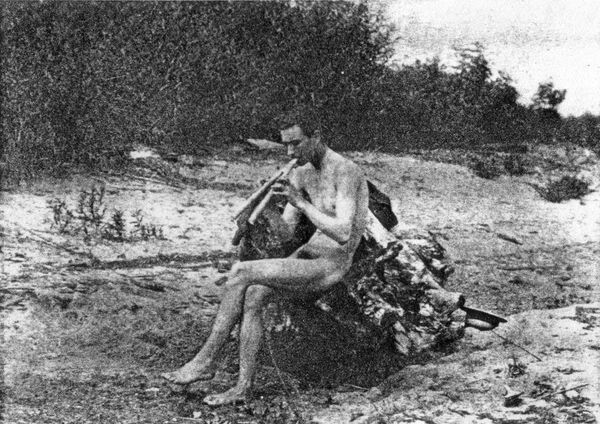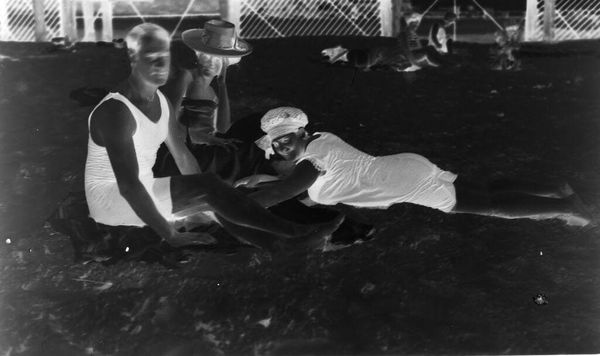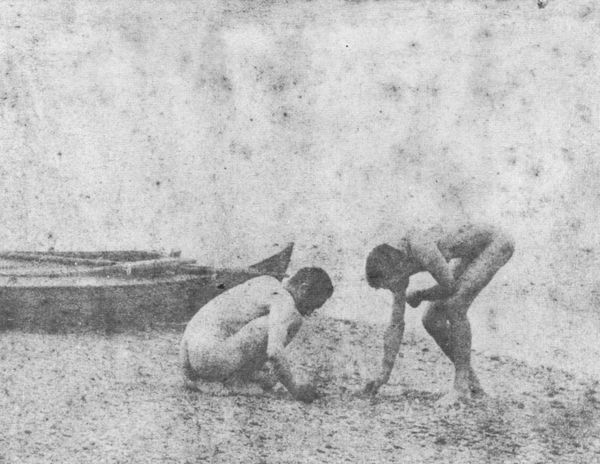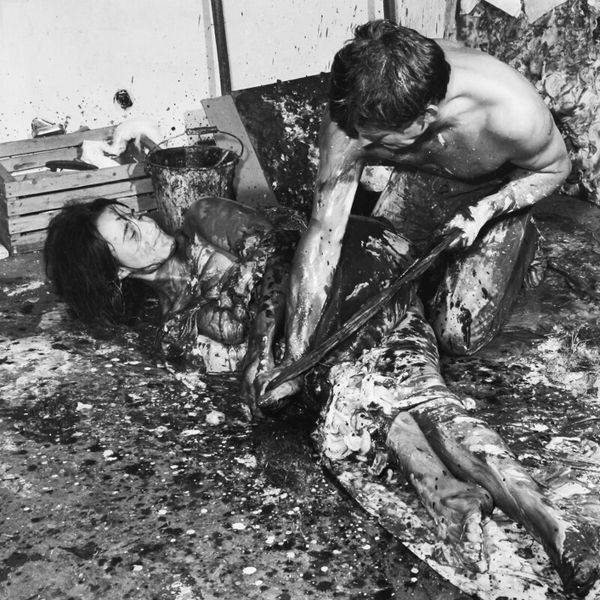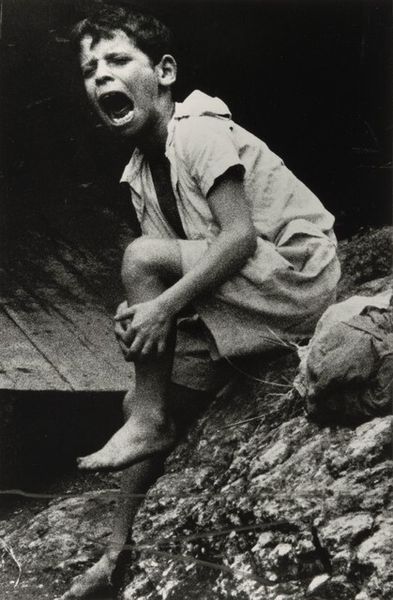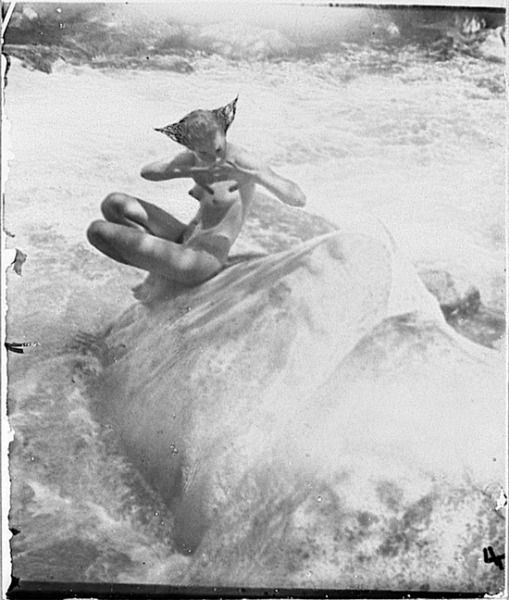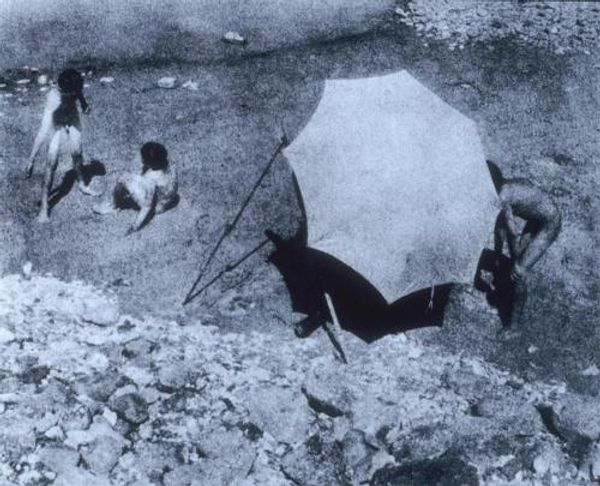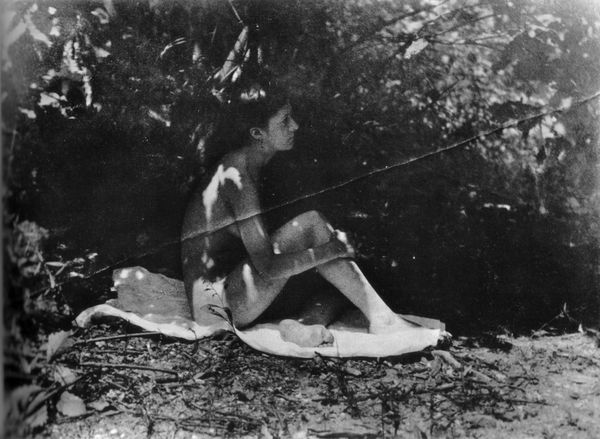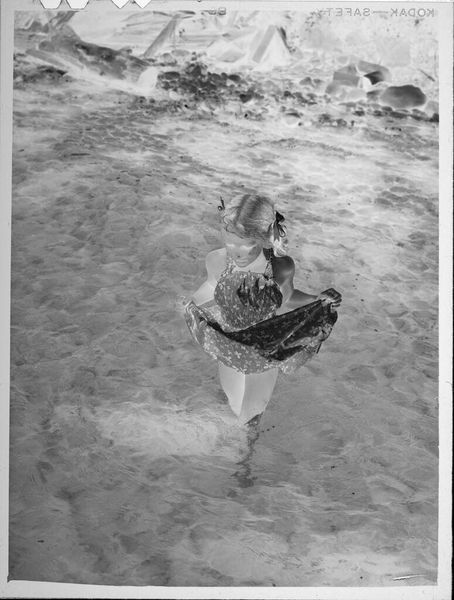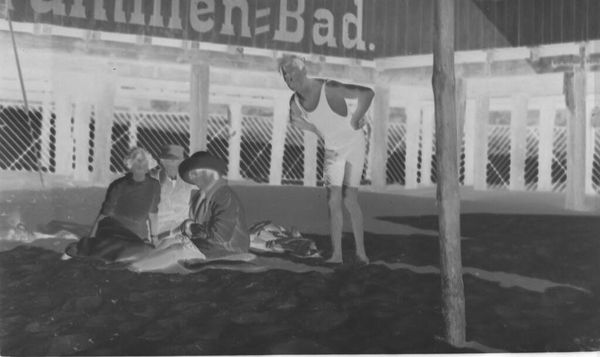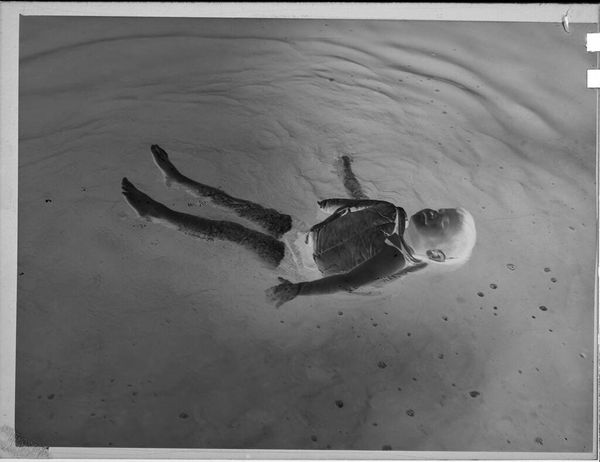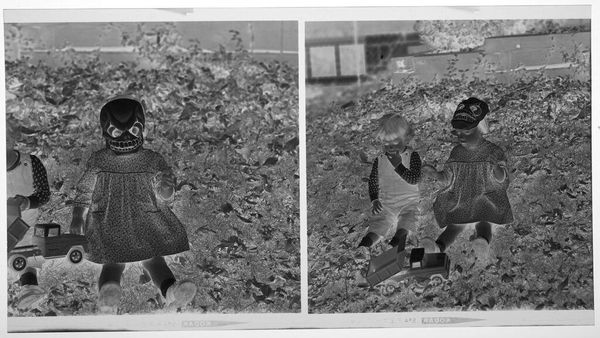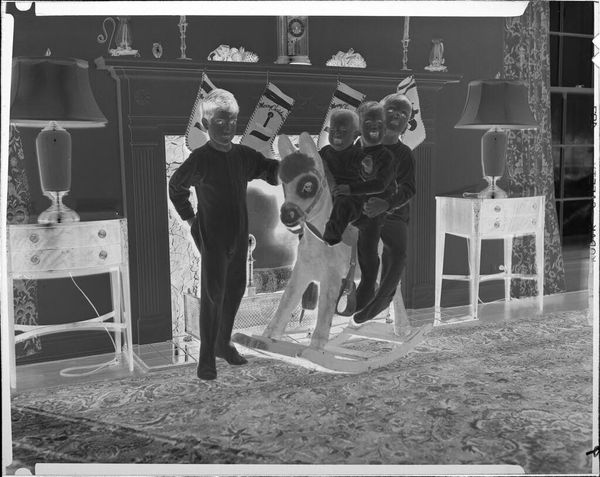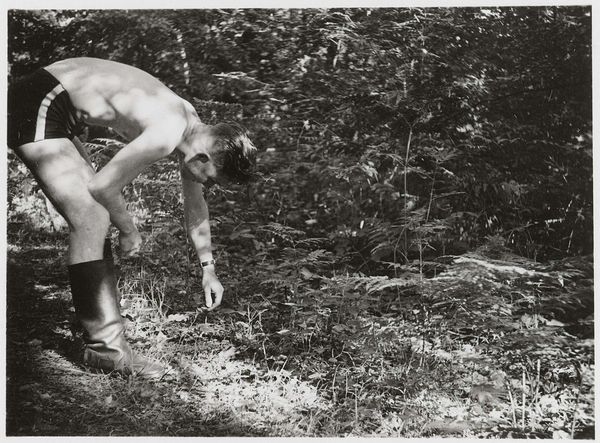
performance, photography
#
action-painting
#
performance
#
black and white photography
#
photography
#
body-art
#
black and white
#
monochrome photography
#
monochrome
#
gutai
Copyright: Kazuo Shiraga,Fair Use
Editor: This is Kazuo Shiraga's "Challenging Mud," a black and white photograph from 1955 documenting a performance. There's something incredibly raw about it, watching a figure seemingly struggle in this... mud pit. What do you see in this piece? Curator: Well, it’s not just mud, is it? It’s a site of production. This performance, captured in photography, pushes the boundary between painting and action, almost an anti-form. We see Shiraga physically engaging with the base matter, not as a neutral ground, but as a resistant material. Consider the labor involved, the very act of making a mark or being consumed by it. How does this challenge your notion of art-making? Editor: I see what you mean. It's not just the mud, it's the act of wrestling with it. Almost like he’s not making an object but experiencing something, or… documenting an endurance of sorts. Is it meant to be unsettling, do you think? Curator: Perhaps unsettling is a result of a deliberate attempt to undo the preciousness associated with art object and ideas of “purity” and “genius” of the individual artist. Here, the physical exertion and primal engagement point towards materiality of making: this body, that mud, that instant frozen for our contemplation. Don’t you think that the viewer is drawn into the process, or invited to consider the artist’s actions in ways quite distinct from considering art history's fixed paintings or sculpture? Editor: Absolutely. It makes me think about what art *is*, if something like this – a fleeting performance, documented – can be just as valid as, say, a painting meant to last centuries. Curator: Precisely. And the photograph itself – the means of production, the chemical processes – becomes integral to the artwork’s understanding, not simply a record. It prompts questions about documentation, reproducibility, and the very social context of artistic creation. We consume this captured action, but can never truly inhabit its origin. Editor: That’s fascinating. I never considered how the means of documenting something could become so central to its meaning. Thanks for opening my eyes! Curator: My pleasure! Considering art this way encourages us to see not just the object, but the whole complex system surrounding it – the materials, the labor, and ultimately, its cultural implications.
Comments
No comments
Be the first to comment and join the conversation on the ultimate creative platform.
